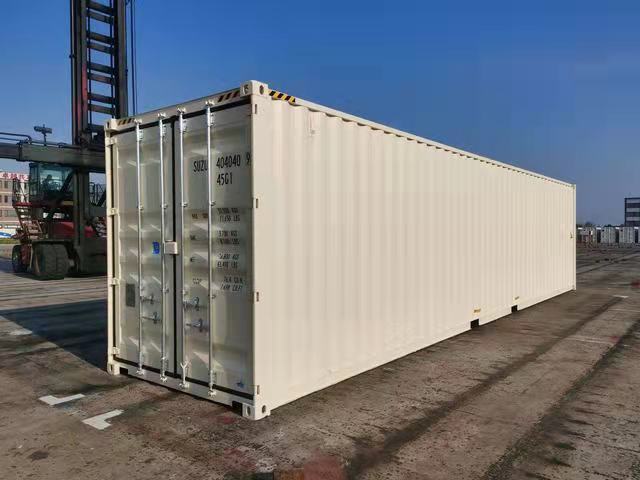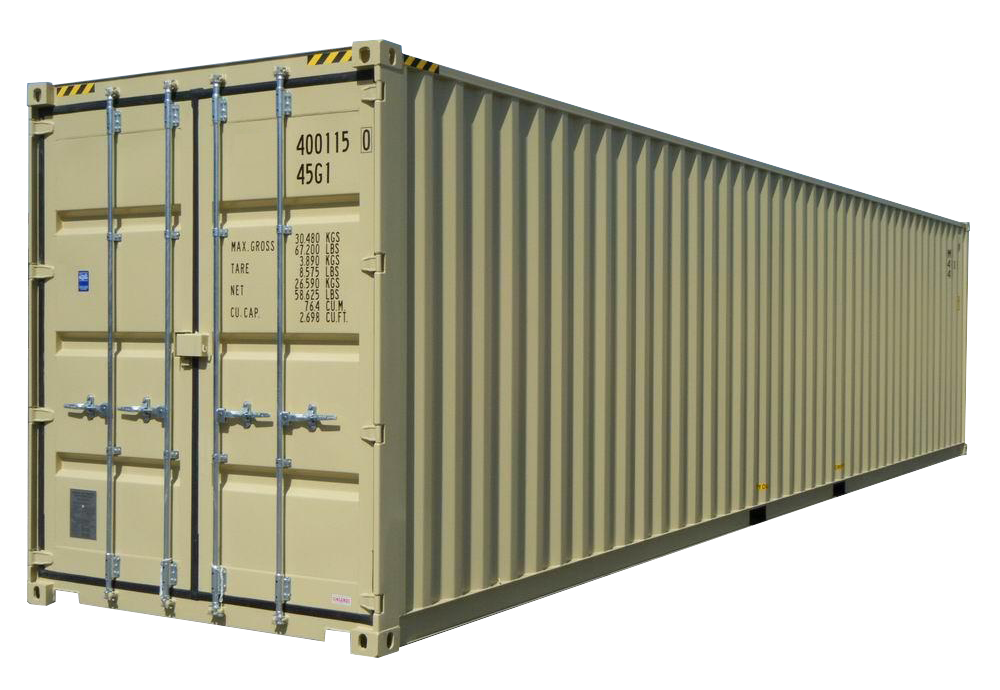Case Study: A Business That Used a New Shipping Container 40 x 8 x 9.6 to Stand Out
Case Study: A Business That Used a New Shipping Container 40 x 8 x 9.6 to Stand Out
Blog Article
The Ultimate Overview to Selecting the Right Delivery Container for Your Demands
When it concerns selecting the ideal delivery container, recognizing your certain needs is necessary. You'll want to think about variables like size, type, and product to ensure you make the very best option. From standard sizes to specialized alternatives, there's a great deal to explore. And also, budgeting for both the container and any alterations can make a big distinction. Allow's damage down the essential elements to assist you find the best suitable for your requirements.
Recognizing Shipping Container Sizes
When you're choosing a delivery container, recognizing the various sizes readily available is vital for making the ideal decision. Delivering containers commonly are available in basic lengths of 20 and 40 feet, but you'll additionally locate various other dimensions. Knowing the size you require depends on what you plan to store or transport.If you're relocating smaller products, a 20-foot container could be excellent, while bigger deliveries usually call for a 40-foot container. Keep in mind that the elevation can additionally differ; high dice containers offer additional upright area, which can be valuable for taller goods - Lease New Shipping Container 40' x 8' x 9’6".Before choosing, measure your cargo, and consider just how much room you'll require for loading and discharging. Always consider prospective future needs-- deciding for a somewhat larger container might conserve you inconvenience down the line. Ultimately, selecting the ideal size will certainly improve efficiency and assure your items are safe and secure throughout transit
Kinds Of Shipping Containers Available
There are a number of kinds of delivery containers available, each created for particular objectives and cargo demands. The common dry container is functional, ideal for basic cargo. If you're shipping disposable products, think about a refrigerated container, which keeps a regulated temperature. For extra-large products, high dice containers offer additional elevation, fitting taller loads.If you require to transfer hefty equipment or equipment, level shelf containers offer a strong base without wall surfaces. Open-top containers permit for easy loading of tall freight, with a detachable tarp covering for security. If you're looking for versatility, take into consideration a collapsible container that can be quickly saved when not in use.Lastly, specialized containers like container containers are used for liquids, while vented containers are developed for bulk freight that requires air flow. Recognizing your cargo type will assist you select the appropriate container to fulfill your shipping needs efficiently.
Material Considerations for Longevity
When selecting a shipping container, the material plays a vital role in its sturdiness. You'll wish to evaluate the advantages of steel versus light weight aluminum, particularly relating to rust resistance. Recognizing these variables can aid you make a more enlightened selection for your delivery requires.
Steel vs. Aluminum Containers
Exactly how do you select between steel and aluminum containers for your delivery requires? Begin by considering sturdiness. Steel containers are robust and offer superb toughness, making them suitable for hefty tons and rough conditions. They withstand damages from effects and are commonly less costly, which can be a major element for budget-conscious buyers.On the various other hand, light weight aluminum containers are lightweight, which can save you on delivery expenses. They're simpler to steer and are a great selection if you need to transfer goods regularly. Light weight aluminum is typically more costly and less durable than steel. Weigh your details requirements thoroughly, consisting of weight, expense, and the sort of cargo you'll be shipping, to make the right selection for your scenario.
Corrosion Resistance Variables
Choosing the right product does not just involve weight and price; deterioration resistance plays a significant function in toughness. When selecting a delivery container, think about the environment it'll encounter. Steel containers, while solid, can rust if not effectively treated. Seek options with safety coverings or galvanization to boost their lifespan. Aluminum, on the various other hand, offers natural rust resistance, making it ideal for coastal locations or moist conditions. It can be a lot more pricey. Additionally, examine the container's use-- if it'll be exposed to chemicals or extreme climate, prioritize materials that can withstand these conditions. Buying a corrosion-resistant container currently can save you from expensive repair services or substitutes down the line. Choose sensibly for long-term Visit Your URL advantages.
Alterations and Customization Options
Delivering containers aren't simply for moving items; they can be changed to satisfy your certain requirements through various alterations and modification alternatives. You can transform a common container right into a relaxing office, a temporary retail store, or perhaps a personal gym. The opportunities are almost endless.Think about adding home windows, insulation, or ventilation to improve convenience. You may also consider electric wiring, pipes, or perhaps customized shelving to enhance capability. If protection's a worry, enhanced locks can offer peace of mind.For visual appeal, you can repaint the container or add an one-of-a-kind design to make it stick out. Don't ignore flooring alternatives-- whether you want long lasting plywood or something more innovative, it can raise the space.Ultimately, customizing your shipping container to match your requirements can boost usability and develop a distinct setting that reflects your design.
Evaluating Your Transport Needs
When it pertains to using your customized delivery container, understanding your transport requires is essential. Beginning by determining what you'll be delivery-- whether it's hefty devices, retail items, or personal products. Each kind of cargo has various needs relating to dimension, weight, and accessibility.Next, consider the range and setting of transport. Are you click here to read shipping in your area, nationally, or globally? This influences the container's layout and performance. If you're making use of vehicles, guarantee your container fits typical dimensions for simple loading and unloading.Additionally, consider transit problems. Will your items need special security from weather condition or temperature level fluctuations? If so, you might need insulation or air flow attributes in your container.Lastly, analyze how usually you'll be transferring products. Regular deliveries might call for a more resilient and flexible container to satisfy continuous needs. By resolving these variables, you'll be well-prepared to select the right delivery container for your needs.
Budgeting for Your Delivery Container
Establishing a budget for your delivery container is crucial for ensuring a smooth buying process. Establish just how much you can manage to invest. Rates can differ significantly based on size, condition, and kind. New containers commonly set you back much more, but utilized ones can use considerable savings.Next, consider any kind of added expenses you might sustain, such as transportation fees, delivery costs, and adjustments. If you plan to tailor the container, variable in those costs too. Study different providers to contrast costs and discover the best bargain that satisfies your needs.Don' t forget to include any kind of licenses or policies that might relate to your acquisition and use the container. By plainly describing your budget plan, you'll be much better prepared to make educated decisions, ensuring you obtain the appropriate container without damaging the bank.
Maintenance and Treatment for Durability
To assure your delivery container lasts for many years, normal upkeep is crucial. Begin by inspecting the outside for corrosion, dents, and damages. If you spot any type of problems, resolve them quickly to protect against more damage. Clean the container occasionally, both throughout, to eliminate dust, debris, and wetness that can lead to corrosion.Ensure the doors seal appropriately and lubricate the joints to avoid rust and sticking. If you're using the container for storage space, take into consideration adding ventilation to minimize moisture and mold and mildew development. For additional defense, use a rust-inhibiting paint or sealant annually.If your container's situated in an extreme setting, like coastal locations, you could need to raise upkeep frequency. Keep an eye on the flooring, also; any kind of indicators of wear must be fixed today. With these straightforward actions, you'll extend the view life of your delivery container significantly.
Frequently Asked Inquiries
Just how Do I Locate a Reliable Delivery Container Supplier?
To find a trustworthy delivery container supplier, beginning by looking into online reviews, requesting recommendations from close friends or market calls, and contrasting prices. Constantly check their credentials and warranty they offer top quality containers that satisfy your requirements.

Can I Rent a Shipping Container Instead of Buying?
Yes, you can definitely rent a shipping container rather than getting one. Many providers supply rental alternatives, which can conserve you money and give versatility if you just need it for a short period.
What Allows Are Required for Container Positioning?

Are Shipping Containers Weatherproof and Appropriate for Outdoor Storage?
Yes, shipping containers are usually weatherproof, made to hold up against extreme problems. Their robust building maintains your products safe and completely dry, making them appropriate for exterior storage. Just ensure correct ventilation to stop wetness buildup inside.
How Do I Transfer a Shipping Container When Acquired?

Report this page